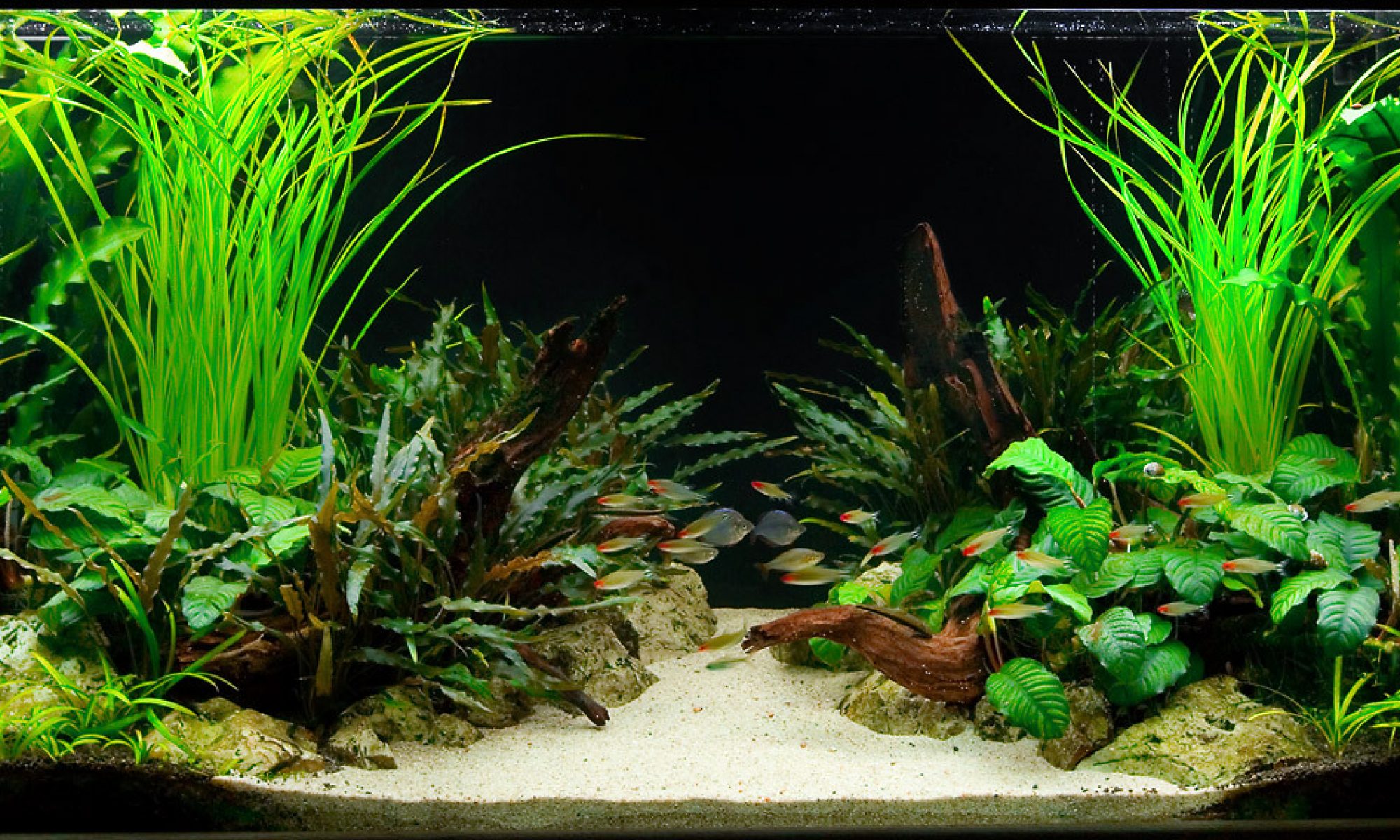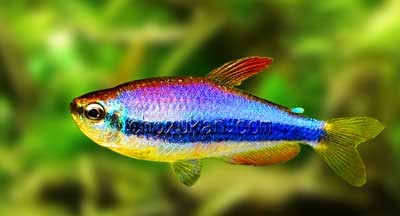The Purple Emperor Tetra (Inpaichthys kerri) is found in sluggish tributaries off the main river channels of the Rio Aripuane and upper Rio Madeira basins, in Brazil and are known to tropical fish keeping enthusiasts as the Blue Emperor Tetra, Inpaichthys Tetra, Regal Emperor Tetra, or Royal Emperor Tetra.
Details
| Type | Tetra |
| Family | Characidae |
| Species | Inpaichthys kerri |
| Synonyms | |
| Origins | Brazil |
| Sexual Dimorphism | Male fish have a blue adipose fin, whereas that of the female is red-orange. Mature males also tend to be more colourful and of slimmer build. |
| Length | 4.0 cm |
| Shoaling | Yes |
| Temperature | 24 - 27 deg C |
| Water parameters | pH 5.5 - 7.0, dH 1 - 8 |
Care
The Purple Emperor Tetra is known from sluggish tributaries of the Aripuanã River, which forms part of the upper Madeira river basin in Mato Grosso, north-western Brazil. Here the waters are clear but tea coloured - a result of the tannins being released from decaying leaves that have fallen from the forest canopy above, rendering the conditions soft and acidic. The aquarium that houses Purple Emperor Tetras should be furnished with plenty of driftwood to create lots of shady areas, and the tannins that are gradually released from the wood should help to acidify the water whilst giving it a natural, clear tea-colour. Peat filtration can also help in this respect. Although plants are not found in abundance in the natural waters of this species, a moderate amount of planting will be appreciated and will help to make the fish feel more secure. Lighting should not be too bright (tannins and floating plants can help to diffuse brighter lighting), and darker substrate and background choices will help to show off their delightful colours. Unfortunately, Purple Emperor Tetras do have a rather underserved reputation for fin-nipping. This type of behaviour only really manifests when they are not maintained in sufficient numbers and when there are not enough visual barriers amongst the décor. This species should always be maintained in good sized groups of around 10 or more specimens. Not only will the fish feel more secure, but it will result in far less hostility between the males, plus it will create a much more effective and natural-looking display. Tankmates should be small and peaceful, and could include Corydoras catfish, small dwarf cichlids such as Apistogramma or Mikrogeophagus, pencilfish, and some of the smaller Loricariidae (suckermouth catfish). Avoid large, boisterous tankmates as these tetras are easily intimidated. Much attention must be paid to water quality since Purple Emperors can be sensitive to elevated nitrates and swings in water chemistry. May also be seen on sale as the Blue Emperor Tetra or the Royal Tetra. Another similar-looking fish, although from a different genus altogether, is the Emperor Tetra (Nematobrycon palmeri). Nematobrycon grow slightly larger than Inpaichthys and do not possess an adipose fin.Feeding
Offer a varied diet including a good quality flake, micropellets, and small frozen foods such as bloodworm, white mosquito larvae, vitamin-enriched brineshrimp, and daphnia.Breeding
This species has been bred in the home aquarium. Small numbers of fry may appear from time to time in heavily planted tanks, but if you wish to raise a larger number of young, a separate breeding aquarium should be set up. The water should be soft and acidic, ideally with a pH between 5.5-6.8 and a general hardness of <8 degrees, and filtered via a small air driven sponge filter. The temperature should be set at the higher end of their preferred range, and lighting kept subdued. Spawning mops or clumps of Java moss should be placed on the bottom of the aquarium, and small groups of well-conditioned males and females (or even just a single male-female pair) carefully acclimatised across. The fish should spawn the following morning, with just a few eggs scattered at a time, over the course of several hours. The adults are non-guarders and should be removed after spawning to prevent predation on the eggs. Some aquarists like to use a fine mesh in the tank so that the scattered eggs can fall to safety, away from the attention of the adult fish. The eggs should hatch within 24-36 hours (depending on temperature of the water), with the fry becoming free-swimming some 3-4 days later. They should be offered infusoria as a first food, moving on to baby brineshrimp (Artemia nauplii) and microworm as they grow.

